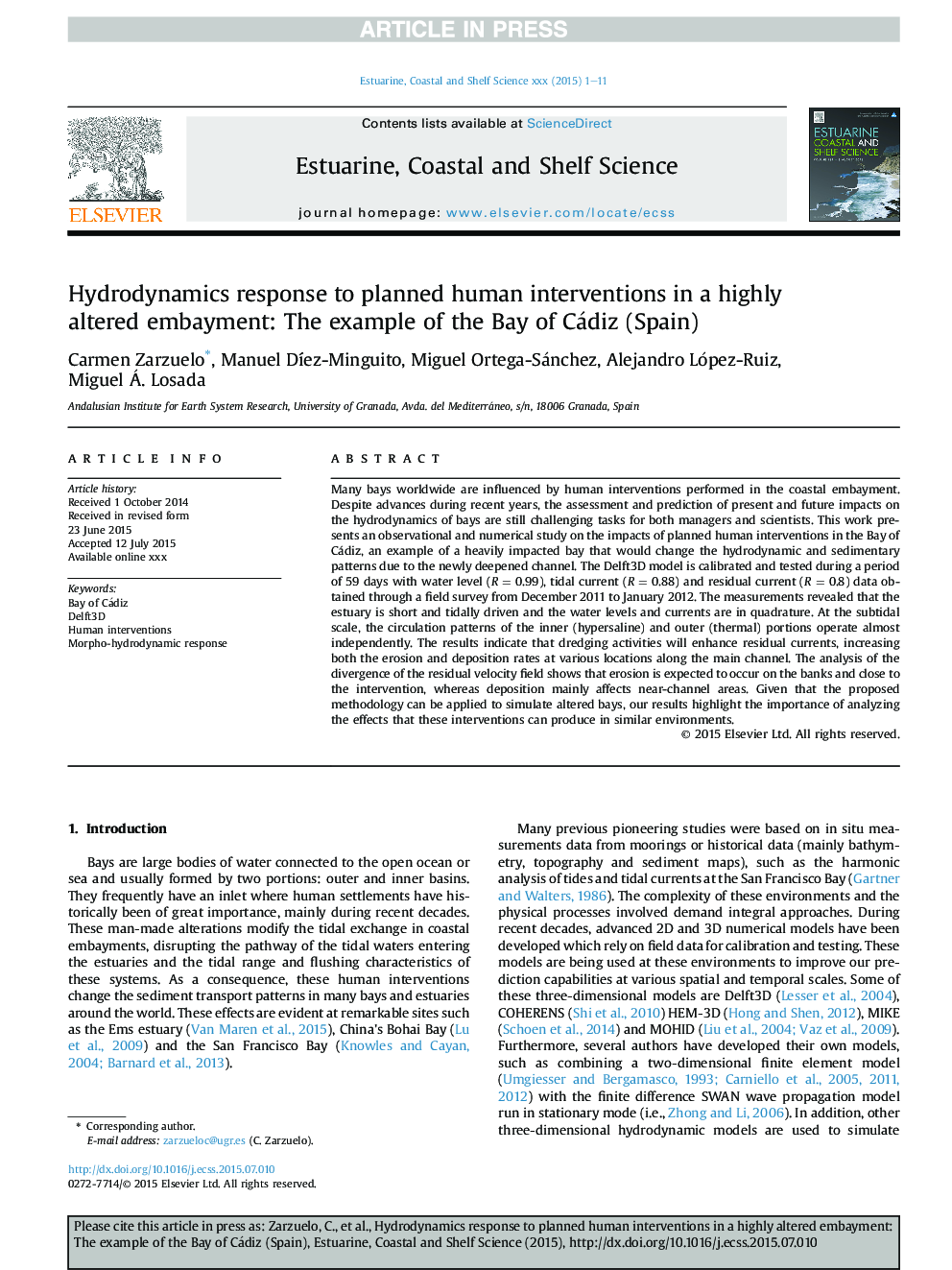| Article ID | Journal | Published Year | Pages | File Type |
|---|---|---|---|---|
| 6384555 | Estuarine, Coastal and Shelf Science | 2015 | 11 Pages |
Abstract
Many bays worldwide are influenced by human interventions performed in the coastal embayment. Despite advances during recent years, the assessment and prediction of present and future impacts on the hydrodynamics of bays are still challenging tasks for both managers and scientists. This work presents an observational and numerical study on the impacts of planned human interventions in the Bay of Cádiz, an example of a heavily impacted bay that would change the hydrodynamic and sedimentary patterns due to the newly deepened channel. The Delft3D model is calibrated and tested during a period of 59 days with water level (RÂ =Â 0.99), tidal current (RÂ =Â 0.88) and residual current (RÂ =Â 0.8) data obtained through a field survey from December 2011 to January 2012. The measurements revealed that the estuary is short and tidally driven and the water levels and currents are in quadrature. At the subtidal scale, the circulation patterns of the inner (hypersaline) and outer (thermal) portions operate almost independently. The results indicate that dredging activities will enhance residual currents, increasing both the erosion and deposition rates at various locations along the main channel. The analysis of the divergence of the residual velocity field shows that erosion is expected to occur on the banks and close to the intervention, whereas deposition mainly affects near-channel areas. Given that the proposed methodology can be applied to simulate altered bays, our results highlight the importance of analyzing the effects that these interventions can produce in similar environments.
Related Topics
Physical Sciences and Engineering
Earth and Planetary Sciences
Geology
Authors
Carmen Zarzuelo, Manuel DÃez-Minguito, Miguel Ortega-Sánchez, Alejandro López-Ruiz, Miguel Á. Losada,
